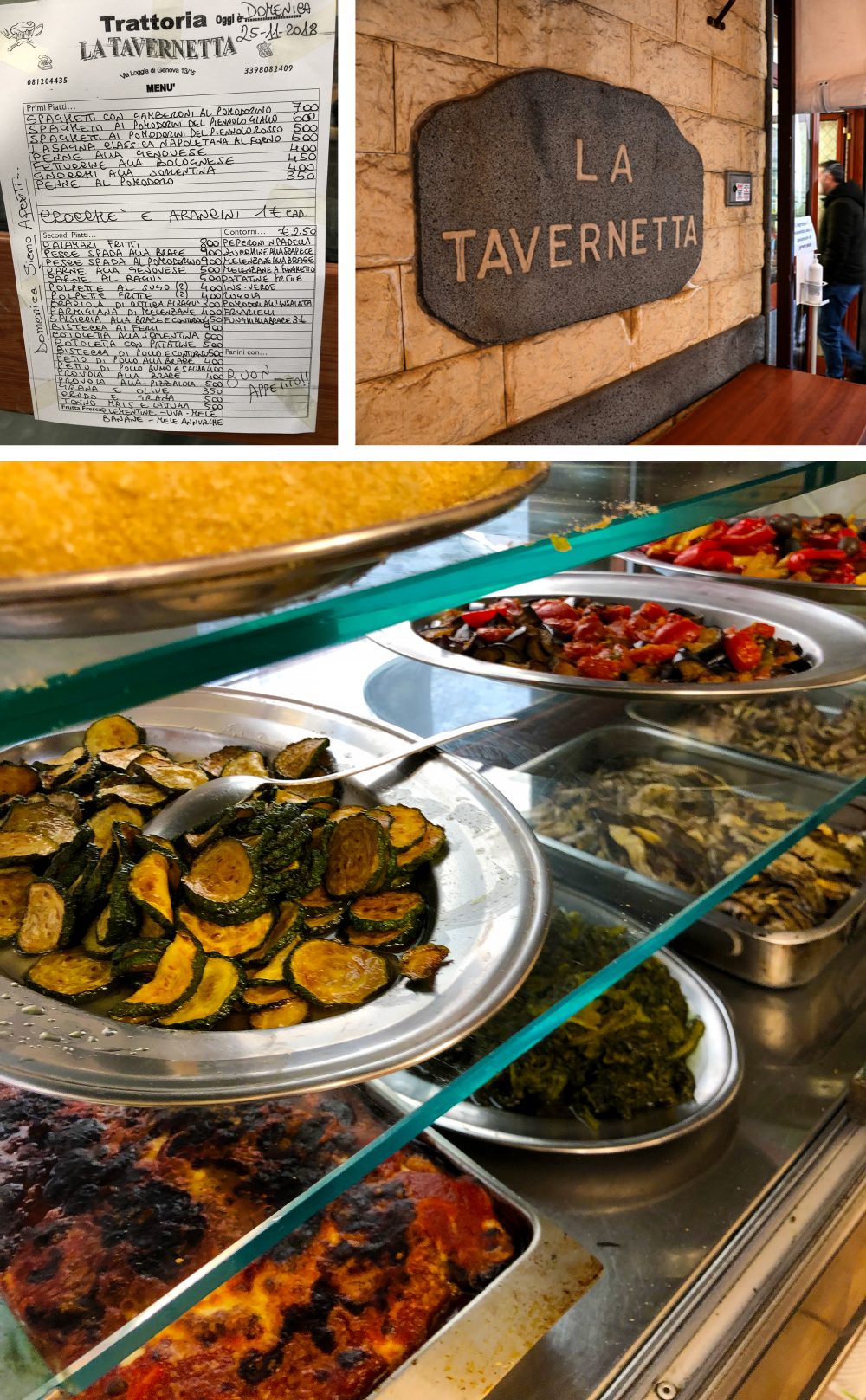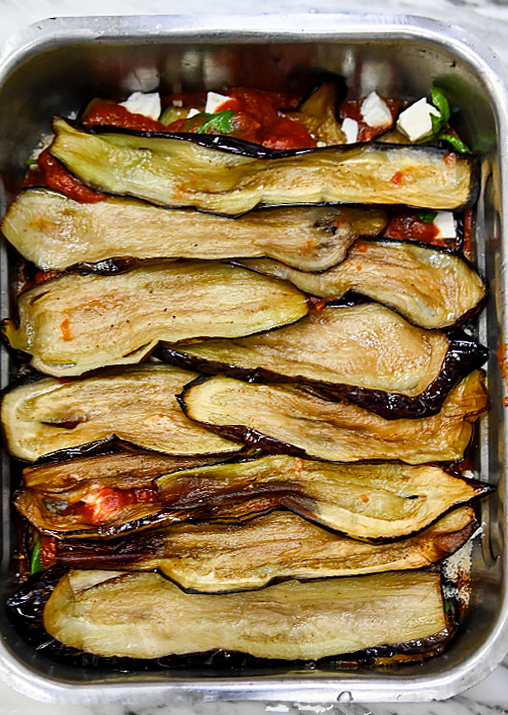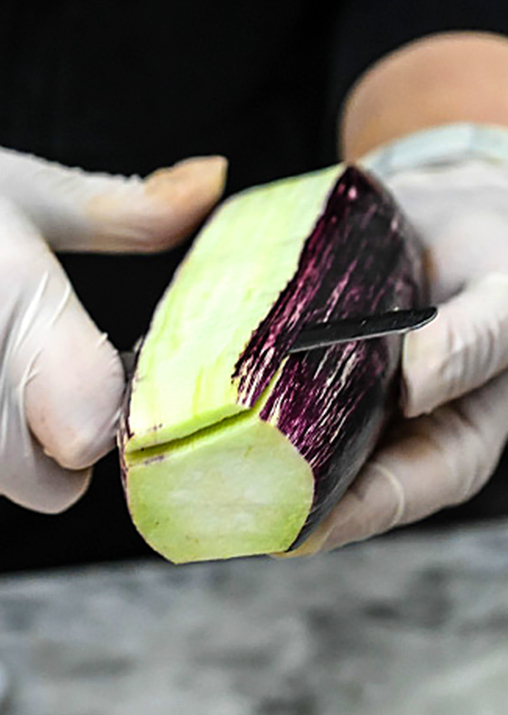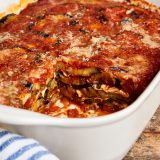It’s a look I’ve come to appreciate, even if it shames me a bit. A look each of the five Vittozzi sisters is a master of—undoubtedly learned from their mother and grandmother, usually cooking nearby. A look slightly scolding, slightly puzzled by the silliness of my questions. A look, nonetheless, followed by a patient explanation of everything I’ve misunderstood.
I’ve cooked with the Vittozzi sisters—Rosa, Anna, Veronica, Enza and Elena—repeatedly over the years at La Tavernetta Vittozzi, their cozy back-alley restaurant not far from the Gulf of Naples. It’s the sort of Central Casting eatery where most diners are diners who visit daily, where the side dishes are displayed in the window and the menu is handwritten and photocopied fresh.
Each time, I bring new-to-me mysteries from my mission to understand real Italian cooking. How do you make the perfect meatball? How do you get your onions so beautifully caramelized for pasta Genovese? What’s the real Italian wedding soup and why is it so much better than Italian-American versions? And oh-my-god! your grandmother’s lasagna! Please, teach me!

At La Tavernetta Vittozzi in Naples, the menu is deliciously rustic, and the eggplant Parmesan is impressively lighter than in the U.S.
Hence, the look.
This visit is no different. This time I’ve come to them to learn Parmigiana di melanzane, or eggplant Parmesan, a dish loved and loathed in the U.S. Loved because it channels the spirit of lasagna, with meaty-rich slabs of eggplant standing in for the noodles, layered and slathered in sweet tomato sauce, herbs and cheese. Loathed because, well ... where should I start?
In the U.S., the equation is pretty standard. Slabs of eggplant are dipped in flour, then dipped in egg, then dipped in breadcrumbs. It would be hard to imagine a better-designed culinary sponge. Which is why when those slabs are deep-fried, they sop up ridiculous amounts of oil no amount of tangy tomato sauce can cut through. And don’t forget the mozzarella.
Which is to say, in the U.S. eggplant Parmesan too often is a gut-buster of a dish.
It’s another matter entirely in Italy, where claims to the dish’s origins are debated, though most say the dish dates back at least a few hundred years and center it around southern regions or Sicily.
The eggplant Parmesan emerged bubbling and browned. The taste was rich, savory and sweet. Most notable was the smoked provolone, a wonderful contrast to the tangy-sweet tomatoes.


Anna Vittozzi prefers to hand-cut eggplant into long, thin planks, then fry them until crisp without breading to keep the dish rich yet still light.
Here, Parmigiana di melanzane runs a spectrum, some almost as heavy and breaded as back home, some just lightly floured to lend crispness with less heft. Some are coated with nothing at all, creating a dish tender and light in ways that defy its richness.
The version served by the Vittozzi sisters in Naples leans to the latter, and the reason is simple. We think of eggplant Parmesan as a main course. But in and around Naples it often is a side. Sometimes it’s even a sandwich filling. The local recipe evolved as it did—with no coating and only gentle frying—because in both cases, lighter is better.
Each sister specializes in a different dish. Anna’s art is Parmigiana di melanzane, so today it was her turn to endure my questions and throw me “the look” when my questions seemed too basic. As ever, during prep time, the kitchen spilled into the dining room and white marble tables were pulled together to create a work area for my lesson.
The ingredients were simple, the method even simpler. Most important, Anna explained, is the way the eggplant are cut.
Slice them by hand or with a mandoline—she prefers the control she gets from a knife, cupping each vegetable in her left hand and pulling a short knife through it toward her one slab at a time—but either way make the slices no thicker than ¼ inch, thinner if you can. And leave some of the skin on, which keeps the slices from breaking down too much during cooking.
She then fried the slices, but only in a bare amount of oil and for just shy of a minute, long enough to tenderize and lightly brown the center and begin to crisp the edges. Most importantly, not long enough to absorb much oil, a factor further enhanced by the lack of any coating.
While the slices drained on paper towels, Anna made a spectacularly simple sauce from little more than onion, olive oil, tomatoes and salt. Then she was ready to assemble. And here again, a subtle difference made all the difference.
She didn’t merely layer tomato sauce, fresh basil, eggplant and cheese—more on the cheese in a moment—she rotated the pan 90 degrees with each successive layer. The result created an almost thatched structure in the finished dish, making it easier to cut, serve and eat.
As for that cheese... We’re used to a blend of Parmesan and stringy mozzarella, the latter generally adding heft without a lot of flavor. But at La Tavernetta Vittozzi, they favor a blend of Parmesan and smoked provolone. I wasn’t convinced it would make a difference, assuming the smoky flavors would be lost under the tomato sauce and assertive Parmesan.
As usual, I was wrong. Baked for just about 20 minutes, the eggplant Parmesan emerged bubbling and lightly browned. The taste was phenomenal, rich and savory and sweet. And the most notable flavor was the smoked provolone, a wonderful contrast to the tangy-sweet tomatoes that added tremendous depth.
Our changes to the Vittozzis’ recipe were minor. We liked a bit of butter stirred into the tomato sauce; it gave it a wonderful richness—thank you, Marcella Hazan! And with a bit of tinkering, we found that brushing the eggplant with oil and baking it delivered results as good and even a bit lighter, and with less mess.
A result, I suspect, that won’t earn me another look from the Vittozzi sisters. Until next time, of course.
Related Recipes
March - April 2023

Sign up to receive texts
Successfully signed up to receive texts!
We'll only send our very best offers - Like a $15 store credit to start.
By entering your phone number and submitting this form, you consent to receive marketing text messages (such as promotion codes and cart reminders) from Christopher Kimball's Milk Street at the number provided, including messages sent by autodialer. Consent is not a condition of any purchase. Message and data rates may apply. Message frequency varies. You can unsubscribe at any time by replying STOP or clicking the unsubscribe link (where available) in one of our messages. View our Privacy Policy and Terms of Service.







